Army of Kenya. From colonial shooters to modern fighters against terrorism
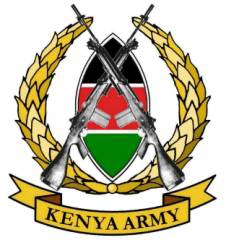 The former British colony, Kenya, despite the existence of a number of political and socio-economic problems (tribalism, corruption, interfaith and interethnic contradictions, poverty and unemployment of a large part of the population), is still among the most "stable", so to speak, African states. At least, it was in Kenya that such a political regime was formed, which for many decades of the existence of sovereign Kenyan statehood allows to consider this country as one of the most stable and economically developed in the region. Of course, if you compare Kenya with its neighbors, such as Somalia, Ethiopia or Uganda, then Kenya’s economic and political well-being is obvious. Much credit goes to the country's first president, Jomo Kenyat (1891-1978), who led Kenya after 12’s independence on December 1963, and to his successor as head of state, Daniel arap Moi (born 1924), who headed Kenya in 1978- 2002 Their pro-Western policies helped to attract numerous investments and subsidies to the Kenyan economy, since during the Cold War, Kenya was viewed as a counterweight to Soviet influence in the region. The notion of Kenya as the “outpost” of Western democracy in the east of the African continent still exists today. It is the Kenyan armed forces that are one of the main components in the system of deterrence of religious-extremist groups in eastern Africa, primarily in Somalia.
The former British colony, Kenya, despite the existence of a number of political and socio-economic problems (tribalism, corruption, interfaith and interethnic contradictions, poverty and unemployment of a large part of the population), is still among the most "stable", so to speak, African states. At least, it was in Kenya that such a political regime was formed, which for many decades of the existence of sovereign Kenyan statehood allows to consider this country as one of the most stable and economically developed in the region. Of course, if you compare Kenya with its neighbors, such as Somalia, Ethiopia or Uganda, then Kenya’s economic and political well-being is obvious. Much credit goes to the country's first president, Jomo Kenyat (1891-1978), who led Kenya after 12’s independence on December 1963, and to his successor as head of state, Daniel arap Moi (born 1924), who headed Kenya in 1978- 2002 Their pro-Western policies helped to attract numerous investments and subsidies to the Kenyan economy, since during the Cold War, Kenya was viewed as a counterweight to Soviet influence in the region. The notion of Kenya as the “outpost” of Western democracy in the east of the African continent still exists today. It is the Kenyan armed forces that are one of the main components in the system of deterrence of religious-extremist groups in eastern Africa, primarily in Somalia. Royal African Arrows and the creation of the Kenyan army
History The Kenyan armed forces are rooted in the colonial era. In fact, the modern armed forces of Kenya are the direct heirs of the British colonial forces in East Africa, who were recruited from the local population and served to protect British possessions in the region. The units recruited from the natives were consolidated into a regiment of Royal African Riflemen, formed in 1902 as a result of the unification of the Central African Regiment, East African Riflemen and Ugandan Riflemen. In the period before the First World War, the regiment consisted of six battalions - the first and second Nyasaland (Nyasaland is the territory of the modern state of Malawi), the third Kenyan, the fourth and fifth Ugandan, and the sixth Somaliland. By the end of the First World War, after a military increase in staff, the 22 battalion was part of the Royal African Riflemen. During the Second World War, in which Kenyan soldiers also took part, 2 East African infantry brigades were created on the basis of the regiment of the Royal African Riflemen. After the proclamation of independence of the former British colonies in East Africa, Malawian riflemen (1-th battalion), a regiment of Northern Rhodesia (2-th battalion), Kenyan arrows (3-th, 5-th and 11-) were created on the basis of battalions of the Royal African Riflemen battalions), Ugandan arrows (4 battalion), Tanganyika arrows (6 battalions and 26 battalions). Thus, the Kenyan battalions of the Royal African Riflemen became the forming basis of modern armed forces of independent Kenya.
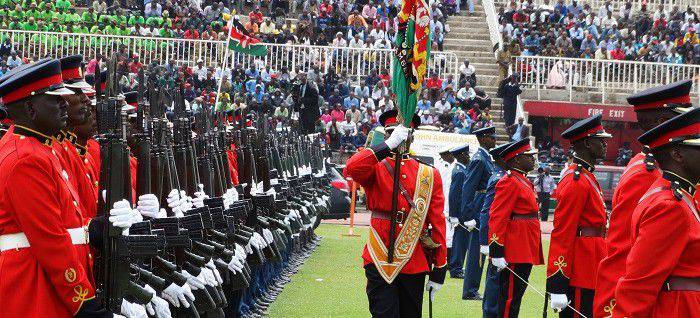
Currently, the Kenyan Armed Forces consist of the Kenyan Army, the Air Force and the Navy. Their story began when Kenya proclaimed state sovereignty in 1963. Practically in the very first days of Kenya’s political independence, an attempt was made by a military coup undertaken by junior officers of the 11 Battalion of the Kenyan Riflemen. Counting on wage increases, the soldiers of the battalion attempted to revolt, but he was nipped in the bud. 43 soldier brought before a military court. After this, the 11 Battalion of the Kenyan Riflemen was disbanded. Instead, a new 1 battalion of Kenyan Riflemen was created, numbering 340 soldiers. After the rebellion, Kenya’s president, Jomo Kenyatt, raised the wages of the servicemen, but at the same time instructed the investigative department (CID) to check the army for reliability of the personnel. A course was set for the "Africanization" of the armed forces. According to the Anglo-Kenyan Treaty of 3 June 1964, Great Britain to 12 December 1964 pledged to withdraw all its troops from the territory of Kenya and, at the same time, help the young state to create a new army, air force and naval forces. Training the personnel of the Kenyan army was carried out by British officers and sergeants. President Jomo Kenyat received guarantees of direct military assistance to Great Britain in the event of war, insurrection, or other crisis situations. The command of the Kenyan army at first was carried out by the British Brigadier General, but later he transferred his authority to the Kenyan Brigadier General Joseph Ndolo. 1 December 1966 was appointed Major General Bernard Penfold as Chief of the General Staff of the Kenyan Armed Forces. The appointment of an English senior officer to this position once again emphasized the preservation of British influence in postcolonial Kenya. On the other hand, it was quite clear that at first the Kenyan army could not do without the help of British officers - after all, Kenyan officers did not have the necessary experience and education to occupy responsible posts in command of the armed forces. Even if Kenyans were formally appointed to the top military posts, in fact, they were British officers in the rank of advisers.
Structure and staffing of the armed forces of Kenya
In accordance with the Constitution of Kenya, the supreme commander of the country's armed forces is its president. Direct control of the daily activities of the armed forces is carried out by the Minister of Defense, the permanent secretary of the Chancellery for Armed Forces and the commander of the armed forces (he is also the chief of the Kenya defense headquarters). The highest advisory body under the President of the country is the Defense Council, which is engaged in the development of national security issues, the formation and reform of the armed forces, the use of the army and fleet in peacetime and wartime. The members of the Defense Council are the President, Vice President, State Secretary of Defense, Permanent Secretary of the Presidential Office for the Armed Forces, the Minister of the Interior, the Attorney General, heads of special services and generals of the armed forces. The highest operational body of command of the armed forces of Kenya is the headquarters of the defense, which includes departments: operational, combat training, administrative, personnel, technical, military intelligence. The direct control of the types of armed forces is carried out by commanders who simultaneously hold the posts of chief of staffs — the ground forces, air forces and naval forces, respectively. The main structural units of the Kenyan army are battalions, companies and platoons. In the air force, the main structural units are aviation wings divided into technical and administrative squadrons. Kenya’s armed forces are being hired by contract volunteers. A citizen of Kenya between the ages of 18 and 24 who has a secondary or primary education can enter into a contract for military service. The contract is concluded for a period of 9 years, with the right to extend. The most successful soldiers in service and combat training receive an offer to undergo training at a military training center and transfer to the rank of sergeants. Officers are trained at the National Defense College and the Nakuru Officers School. There is an aviation school in Nairobi for the training of air force officers, with Air Force officers taking elementary combined-arms training at an army officer school. In addition, Kenyan troops are regularly sent to continue their education at military schools in the United States, Britain and other countries. With regard to military ranks, the Kenyan armed forces have established a British military rank system, in principle similar to the ranks of other former British colonies. The following military ranks were established: 1) general, 2) lieutenant general, 3) major general, 4) brigadier general, 5) colonel, 6) lieutenant colonel, 7) major, 8) captain, 9) first lieutenant, 10) lieutenant 11) a 1st grade warrant officer, 12) a 2nd grade warrant officer, 13) a senior sergeant, 14) a sergeant, 15) a corporal, 16) a minor corporal, 17) a private.
Kenyan infantry
The basis of the armed forces of Kenya is the Kenyan Army - the country's ground forces. The Kenyan Army includes: Kenyan army infantry, Kenyan army paratroopers, armored forces, Kenyan army artillery, Kenyan army engineers, 50-th Air Cavalry Battalion (50 DIA). In addition, the army includes the Army Ammunition Corps, the Army Transport Corps, the Army Electricians and Machine Builders Corps, the Army Signalmen Corps, the Military Police Corps, the Kenyan Military Education Corps, the Medical Battalion, the Police Defense Forces. The most significant part of the Kenyan Army is the Kenyan infantry. Officially, the main task of the infantry is proclaimed participation in land battles to protect the country, a secondary task is to assist and support the civilian government in maintaining public order and fighting crime and terrorism.
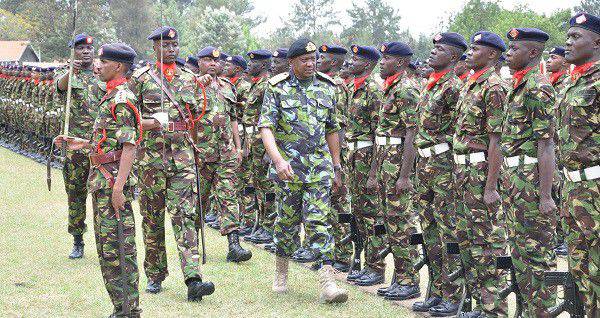
The basis for the Kenyan infantry in 1963 were the 3, 5 and 11 battalions of the Royal African Riflemen, converted into battalions of Kenyan Riflemen. It should be noted that land parts of Kenya from the first days of their existence were considered by the country's political elite as one of the key instruments of political influence. Since the country had an extremely high level of tribalism, Kenyan politicians sought in every possible way to prevent the armed forces from being recruited from representatives of competing tribes or peoples. However, at the time of Kenya’s independence, about 77% of the Kenyan battalions of the Royal African Riflemen were staffed by representatives of the Kenya pastoral communities - calendars, kamba, samburu and tribes of the northern border. This was explained by the long-standing military traditions and belligerence of these peoples, as well as the desire of the British authorities to recruit members of minorities to oppose the Kikuyu, Luo, etc., nations that dominate Kenya.
Currently, Kenyan infantry includes the following formations: 1 battalion of Kenyan riflemen (dislocation - Nanyuki), 3 battalion of Kenyan riflemen (dislocation - Lanet, Nakuru barracks), 5 battalion of Kenyan riflemen (dislocation - Gilgil) , 7 battalion of Kenyan riflemen (dislocation - Langat barracks, Nairobi)., 9 battalion of Kenyan riflemen (formed in September 1979 in Moi barracks near the town of Eldoret), 15 battalion of Kenyan riflemen (13 was formed in March XNX years to participate in the peacekeeping mission UN in Namibia, after returning from Namibia was quartered in the barracks Marikani in Mombasa); The 1989 Battalion of the Kenyan riflemen (dislocation - Nyali base in Mombasa), the 17 Battalion of the Kenyan riflemen (dislocation - Nairobi). Also, military units that do not belong to the "Kenyan riflemen" belong to the Kenyan infantry. These are: 22 th parachute battalion, 20 th Ranger battalion, 30 th special purpose battalion. The 40 Battalion of the Air Cavalry, an airmobile unit, also performs similar tasks. It is on the infantry units of the Kenyan army that the main burden is placed on participating in hostilities against terrorist groups on the Kenyan-Somali border, maintaining law and order in the country, and participating in peacekeeping operations outside Kenya.
In addition to the main tasks of the defense of the Republic of Kenya and the performance of related functions in the field of helping civil authorities to protect public safety and combat emergencies, the Kenyan army has been involved in international peacekeeping operations for almost its entire history. In 1973, the United Nations for the first time appealed to the Government of Kenya for the allocation of armed units for peacekeeping operations in an unstable Middle Eastern region. However, due to certain technical limitations, the Kenyan troops were never deployed. However, in 1979, Kenyan soldiers still had to take part in peacekeeping operations for the first time. At the request of the British Commonwealth, Kenya sent troops for a peacekeeping operation in Southern Rhodesia (now Zimbabwe). Then there was a national liberation war in this country, launched by partisan organizations of the indigenous population against the regime of Ian Smith. In 1982, Kenya sent its officers to participate in a peacekeeping operation in Chad, at the request of the Organization of African Unity. In 1989, one infantry battalion and observer officers were sent to Namibia. Kenya is currently in sixth place among the 90 states involved in United Nations military and police operations. Kenyan peacekeepers invariably participate in international operations in almost all the “hot spots” of the African continent, as well as outside. The participation of Kenyan peacekeepers, military observers, staff officers and police in peacekeeping operations in Liberia, Mozambique, Namibia, Yugoslavia, Somalia is known. Currently, Kenyan peacekeeping forces are serving in 16 various countries in Africa, Asia and Europe. The Kenyan army played a crucial role in defeating the detachments of the radical Somali organization Al-Shaabab, which in 2011 focused on the Somali-Kenyan border. The operation to destroy the Somali militants was named “Linda Nchi” - “Protect the Motherland” (translated from Swahili, common in East Africa). From October 2011 to September 2012 The Kenyan troops, air force and navy, with the support of the armed forces of Ethiopia, the peacekeeping contingent of the African Union countries and a number of Somali pro-government groups, launched decisive attacks on Al-Shaabab positions and were able to significantly weaken this radical organization.
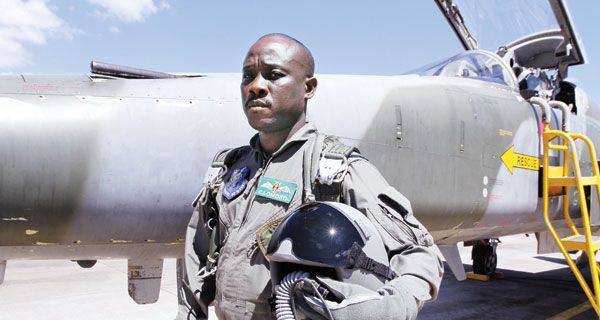
On defense - from the air and from the sea
The Kenyan Air Force began its history on June 1, 1964, shortly after the country's independence, and was created with the direct participation of British military advisers. In 1979-1982. Kenyan President Daniel Arap Moi used Northrop F-5 fighters as escorts during flights across the country and beyond. This subsequently caused criticism of the Kenyan public, which noted that there was no real need to escort the aircraft of the Kenyan leader by fighters, and for the country's economy the constant costs of raising fighters into the air were very expensive. On August 1, 1982, a group of Kenyan Air Force officers attempted a military coup to overthrow President Daniel Arap Moi. After that, he decided to disband the air force as a separate branch of the armed forces and subordinated the aviation units of the army. According to the president, control by the army command would prevent the spread of oppositional sentiments among Air Force officers. It was only in 1994 that the air force was re-allocated as an independent branch of the armed forces of Kenya. Currently, the main base of the Kenyan Air Force is Nanyuki, and the Air Force headquarters is located at Eastleigh Air Base in Nairobi. In addition, an air base operates in Mombasa. The Kenyan Air Force is armed with airplanes and helicopters. According to the Aviation Week & Space Technology magazine, the following combat aircraft are currently in service with the Kenyan Air Force: the Northrop F-5E multirole fighter (USA) - 17 units, the Northrop F-5F (USA) training fighter - 5 units. In addition, the Air Force uses transport aircraft: Piper PA-31-350 (USA) - 1, De Havilland Canada DHC-5D (Canada) - 7, De Havilland Canada DHC-8 (Canada) - 3, Fokker F 70 (Netherlands) - 1, Harbin Y-12 (PRC) - 1. The Kenyan Air Force also uses training aircraft: combat training BAe Systems Hawk Mk. 52 British production - 6 units, training Scottish Aviation SA-3-103 (UK) - 3, Scottish Aviation SA-3-127 (UK) - 2, training Shorts Tucano Mk. 51 (Brazil-Great Britain) - 11. In addition, the country's Air Force is armed with helicopters: 3 French-made Aérospatiale SA.330G transport helicopters, 9 IAR SA330G Romanian transport helicopters and 30 American MD Helicopters 500M multi-purpose helicopters. Since July 30, 2014, Major General of Aviation Samuel Nganga Thuita has been serving as Commander of the Kenyan Air Force.
Kenya is also one of the few African countries that have their own full-fledged naval forces. The history of the Kenyan Navy began on December 12 1964 of the year, exactly one year after the country's independence was declared. The creation of the navy of sovereign Kenya began on the basis of the Royal Navy of East Africa that existed during the colonial era, disbanded in the 1962 year. Kenya directly assisted the creation of the Navy in the United Kingdom. In 1972, Major J. Kimaro was promoted to the next military rank of lieutenant colonel and appointed the first commander of the Kenyan Navy. Kimaro became the first African officer as commander of the Kenyan fleet - his three predecessors were British officers. After his death in a traffic accident in 1978, the Kenyan Navy was led by Major General E. Mbilu, who remained in command for ten years - until 1988.
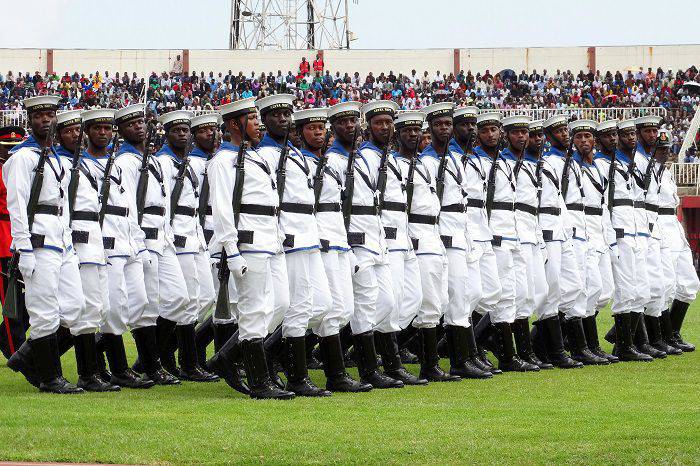
Since August 2015, the Kenyan Navy has been commanded by Major General Levi Mugalu. The headquarters of the Kenyan Navy is in Mombasa, in addition the fleet uses bases in Shimoni, Msambveni, Malindi, Kilifi and Manda. A remarkable feature of the Kenyan naval forces is the specificity of the military ranks established in them. Unlike the fleets of other countries in which there are special naval ranks, Kenya uses the usual ranks of the ground forces - lieutenant, captain, major, lieutenant colonel, colonel, brigadier general, major general, lieutenant general, general. In the arsenal of the Kenyan fleet are missile boats, patrol boats and landing ships. Kenyan naval forces perform the tasks of protecting the territorial waters of Kenya, as well as participating in armed operations conducted by the country. So, 4 September 2012, the Kenyan fleet fired on the Somali city of Kismayo, which was part of the military operation of the African Union forces to liberate the city from the troops of the fundamentalist religious group Al-Shaabab.
Kenyan security services in the country
In the national security system of Kenya, not only the armed forces play an important role, but also the police and special services. It is they who perform the bulk of the tasks of neutralizing terrorist groups and extremist organizations operating in the country. The history of the special services of Kenya began in the colonial period, when the bodies of the colonial police and security and the "native police" began to form. In fact, the Kenyan special services of the colonial era functioned according to the standards of the British Scotland Yard. Also on the territory of Kenya were the units of British intelligence MI-6 and counterintelligence MI-5. After the declaration of independence of Kenya, work began on the creation of new intelligence services of an independent state, which was carried out with the close participation of British consultants. The intelligence services became the most important instrument of political governance in Kenya, and, above all, it was their merit in disclosing conspiracies and preventing military coups and maintaining the continuity of power in the country. The success of the activities of the Kenyan intelligence services was due to their close cooperation with the intelligence services of the United States and Great Britain. By the way, consultants from among the personnel officers of the British and American intelligence services have greatly assisted Kenya in the development of their own intelligence and counterintelligence units. Currently, Kenyan intelligence agencies perform a wide range of tasks in the fight against terrorism, smuggling, espionage, corruption, political conspiracies. The general leadership of the special services is provided by the President of Kenya, and the direct management is led by the Minister of State for Security Affairs and the National Security Council.
Currently, the country's main intelligence service, responsible for counterintelligence and intelligence activities and the maintenance of political order in the country, is the National Intelligence Service, formerly called the National Security Intelligence Service. Initially, counterintelligence was dealt with by a special department of the Kenyan police, which was separated from the police in 1963, and in 1969 was transformed into the Security Directorate. In 1998, instead of the Security Directorate, the National Security Intelligence Service was created. The Director of the National Intelligence Service is also the national security adviser to the President of Kenya. Currently this post is occupied by Major General Philip Kameru. The scope of activities of the National Intelligence Service includes external, internal and strategic intelligence. The main functions of the service include: search and identification of any potential threat to the national security of the country; advising the country's president on national security issues; taking political, economic and military measures to protect the national security of the Kenyan state; verification of citizens of Kenya, claiming to occupy positions implying access to state secrets. The National Intelligence Service has seven divisions: 1) administrative, headed by director of administration, 2) information technology, 3) domestic intelligence, 4) foreign intelligence, 5) analysis and planning, headed by director of economic affairs, 6) operational, 7) National Intelligence Academy, which provides training for the personnel of the special services and enjoys the status of a special department. In addition, the Kenya Security Service has numerous territorial divisions. In addition to the security service, the intelligence services of the country include the intelligence and counter-intelligence units of the defense headquarters of the armed forces of Kenya. Foreign military intelligence of the country is carried out through the system of military attaches, and military counterintelligence - by units operating in the army and navy.
Kenya National Police and “Police Troops”
Kenya’s Ministry of the Interior includes the General Police Directorate, headed by the Police Inspector General. The police are headed by the national police headquarters, located in the capital, Nairobi. Directly subordinate to the headquarters of the police is the Kenya Police College, as well as numerous territorial divisions. The number of police is approximately 35 000 officers. For all administrative and personnel matters is the responsibility of the inspector general of the country's police. In his subordination are the police districts, police departments and police stations. The Kenya National Police includes a number of subordinate structures, which we briefly describe below.
First is the General Service Group. It is a militarized national police unit, staffed by highly qualified officers and equipped with seven seven Cessnas aircraft and three Bell helicopters. Over the past six decades, this unit, which began its history at the end of the 1940-ies, during the colonial era, performs tasks to ensure internal security and order in the country, conducts special operations, suppresses riots. The history of the General Service Group began in 1948, when a unit of 50 people was created, armed with automatic weapons and equipped with armored cars. It participated in the suppression of the famous Mau Mau rebellion, and in 1953 it got its current name. By the middle of 1950's. The General Service Group was staffed by 47 European officers and 1058 African military personnel divided into 5 territorial companies, which included platoons of 39 people. In 1961, military personnel participated in the suppression of mass unrest in Zanzibar, from 1963 to 1969. took part in the fight against the separatists. In 1990-s. squad participated in the suppression of mass demonstrations of left-wing forces in Central Kenya, and in the 2000-s. The main region of the group’s combat operations was North Kenya.
At present, the General Service Unit is a well-equipped and trained public security forces - an analogue of the Russian internal forces, with a total of 5000 troops. At the same time, 2000 military personnel received special training on the model of Israeli police units. All fighters of the CRP, until recently, were taking ten-month special courses in the field camp in Magadi and five-month refresher courses. The General Service team also sends its officers to study in the UK at the British Royal Naval College and the Military Academy. Organizationally, paramilitary police are organized into companies, each of which performs certain functional duties. The company consists of platoons of 30-60 people in each. The commandant of the General Services Unit is currently Mr. Joseph Mboya Kitili. In addition to the General Service Unit, the Kenya National Police includes: 1) Criminal Investigation Department - with headquarters in Karura, Nairobi; 2) Anti-theft Unit - headquarters in Gilgil; 3) Traffic Police Department - headquarters in Nairobi; 4) Kenyan Police College in Quigagno; 5) Kenyan Police Aviation Wing - Headquarters in Nairobi (Commander - Colonel Roger Mbiti); 6) Kenya Transport Police - headquarters in Nairobi; 7) Cynological Police Unit - headquarters in Nairobi; 8) Tourist Police Group - Headquarters in Nairobi; 9) Airport Police Group - Offices in Nairobi, Eldoret and Moi Airport; 10) Marine Police Unit - headquarters in Kilindi, offices in Harbor and Mombasa; 11) Diplomatic Police Unit, with headquarters in Nairobi.
The Criminal Investigation Department is considered one of the most important and effective units of the Kenyan police. Its head is the senior deputy inspector general of the police, but is appointed, based on the importance of the service itself, directly by the president of the country. The department includes: a rapid response squad, a bank fraud control group, a crime prevention and prevention team, a ballistic group, a drug control unit, a forensic medical bureau, a judicial department, a bomb-fighting group, an anti-terrorism squad. In addition, there is a provincial office in each province of Kenya, headed by a provincial criminal investigation officer subordinate to a provincial police officer. The following special ranks are established in the Kenyan police: 1) Police Inspector General (formerly Police Commissioner) - equivalent to the general of the Kenyan army; 2) Deputy Inspector General of Police - the equivalent of Lieutenant General; 3) Senior Assistant Inspector General (Army Major General); 4) Assistant Inspector General (Army Brigadier); 5) Senior Police Superintendent (Army Colonel); 6) Superintendent (Army Lt. Col.); 7) Assistant Superintendent (Army Major); 8) Chief Inspector (Army Captain); 9) inspector (army lieutenant); 10) senior sergeant (army senior sergeant); 11) sergeant (army sergeant); 12) constable (corporal army). Kenyan police officers are trained at the Kenya Police College, but are also sent to continue their studies at police schools in the United States and the United Kingdom.
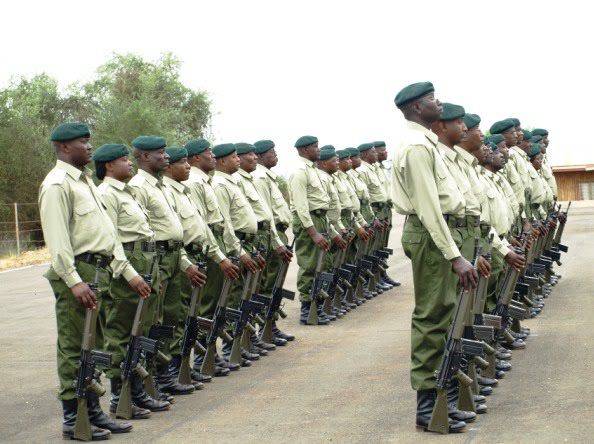 Another militarized structure that plays an important role in ensuring the national security of the Kenyan state is the Kenya Administrative Police. It was created in the colonial period of Kenya’s history, in 1958, and is now also part of Kenya’s Ministry of the Interior. The headquarters of the Administrative Police is located in Nairobi. The distinctive feature of the Administrative Police is that it was created on the basis of the "Tribal Police" ("The Native Police") and aimed at maintaining order in the tribal areas and rural areas. The tasks of the Administrative Police included the fight against livestock theft and mass unrest in the troubled northeastern regions of Kenya. Recall that the desert areas of North-East Kenya are the habitat of nomadic Cushitian tribes, akin to the Somalians and differing extremely warlike temper. These tribes practically did not adapt to the conditions of life in modern society, therefore, so far the Kenyan government has to very often resort to the help of paramilitary units in order to achieve the implementation of the country's laws. Currently, the management of the Administrative Police is carried out by the Deputy Inspector General of the Police (currently Samuel Aracha Mwinger is in this post). The Administrative Police consists of three main units. First, it is the Rapid Deployment Group (GBU), which includes a rapid reaction squadron and headquarters in Embakasi. Secondly, it is the Rural Border Patrol, which guards the state border and patrols the countryside in the border areas. The headquarters of this unit is located in Cagnono. The third division of the Administrative Police, the Government Building Security Service, is located in Nairobi and is responsible for guarding representatives of the country's leadership and the most important public facilities in Kenya. The Administrative Police consists of units specializing in the fight against theft and theft of livestock, the protection of the state border, and mass riots. The Administrative Police even have their own school - the Border Patrol School in Cagnono. Also, officers of the Administrative Police undergo a special training course on training programs for US Marine personnel.
Another militarized structure that plays an important role in ensuring the national security of the Kenyan state is the Kenya Administrative Police. It was created in the colonial period of Kenya’s history, in 1958, and is now also part of Kenya’s Ministry of the Interior. The headquarters of the Administrative Police is located in Nairobi. The distinctive feature of the Administrative Police is that it was created on the basis of the "Tribal Police" ("The Native Police") and aimed at maintaining order in the tribal areas and rural areas. The tasks of the Administrative Police included the fight against livestock theft and mass unrest in the troubled northeastern regions of Kenya. Recall that the desert areas of North-East Kenya are the habitat of nomadic Cushitian tribes, akin to the Somalians and differing extremely warlike temper. These tribes practically did not adapt to the conditions of life in modern society, therefore, so far the Kenyan government has to very often resort to the help of paramilitary units in order to achieve the implementation of the country's laws. Currently, the management of the Administrative Police is carried out by the Deputy Inspector General of the Police (currently Samuel Aracha Mwinger is in this post). The Administrative Police consists of three main units. First, it is the Rapid Deployment Group (GBU), which includes a rapid reaction squadron and headquarters in Embakasi. Secondly, it is the Rural Border Patrol, which guards the state border and patrols the countryside in the border areas. The headquarters of this unit is located in Cagnono. The third division of the Administrative Police, the Government Building Security Service, is located in Nairobi and is responsible for guarding representatives of the country's leadership and the most important public facilities in Kenya. The Administrative Police consists of units specializing in the fight against theft and theft of livestock, the protection of the state border, and mass riots. The Administrative Police even have their own school - the Border Patrol School in Cagnono. Also, officers of the Administrative Police undergo a special training course on training programs for US Marine personnel. 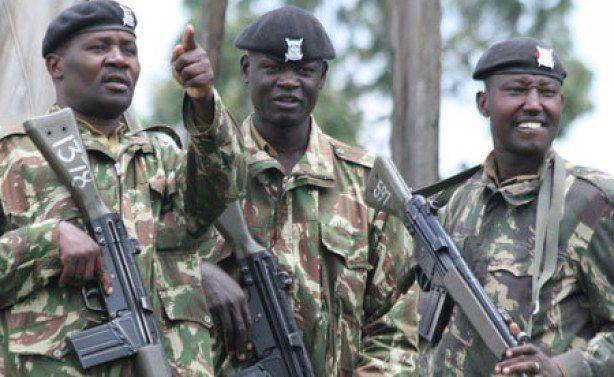
Combating terrorism is the main task
Currently, Kenya is one of the most active participants in the fight against terrorism on the African continent. Anti-terrorism security measures in this country were strengthened after the terrorist attack at Harris University, which took place on 2 on April 2015. Then the victims of terrorists, fanatics from the radical organization Al-Shaabab, became 147 people - mostly students of Kenya University. Militants were not too lazy to learn the religious affiliation of each student, after which they dealt with innocent people. The Kenyan authorities associate the terrorist danger with the activities of radical groups based in neighboring Somalia, but also actively trying to gain a foothold in Kenya - primarily in the camps of Somali refugees, among Somali migrants in the capital Nairobi. By the way, there are certain conditions for this in Nairobi - after the appearance of a significant community of Somali migrants in the country, many of them settled in the Kenyan capital. Somalis stubbornly refuse to assimilate into Kenyan society, prefer to live in closed enclaves, among them the extremely high level of street crime. Mass checks of Somali immigrants and refugees, attempts to limit the entry of migrants into the country and even plans to build a wall separating Kenya from Somalia - this is not a complete list of the measures that the Kenyan government is already taking or is ready to take in the fight against the terrorist threat. However, despite the willingness of the armed forces of Kenya, police and security services to actively deal with the terrorist threat, it is obvious that the solution to the problem of terrorism and extremism in Kenya, as in other countries of the world, lies primarily in the political and socio-economic plane.
- P P 'SЊSЏ RџRѕR "RѕRЅSЃRєRёR№
- http://www.mod.go.ke/,https://www.standardmedia.co.ke, http://allafrica.com/,
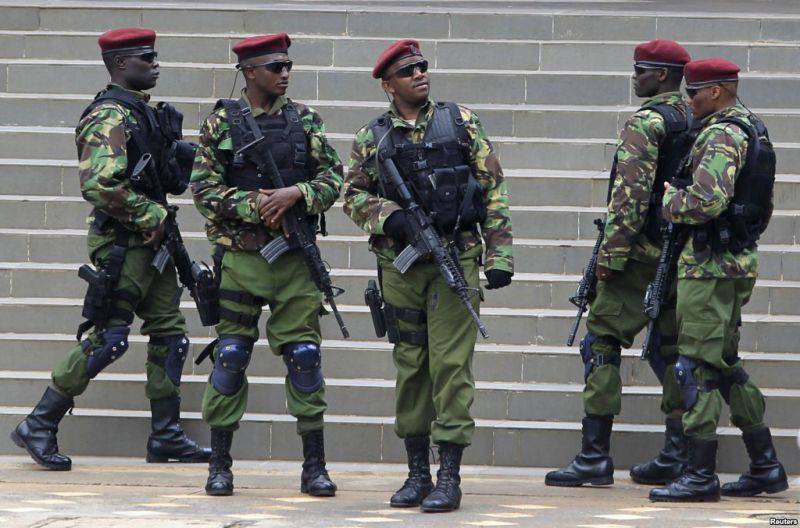
Information